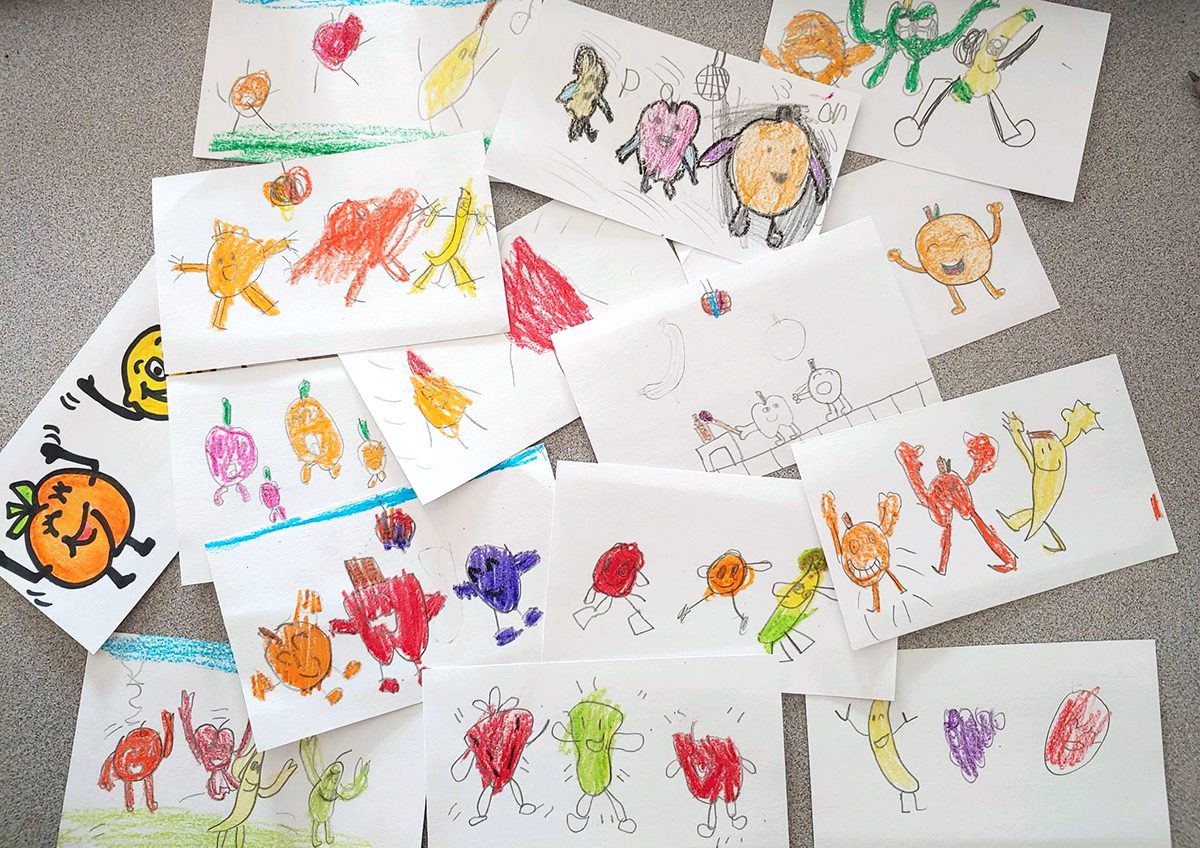How often have you said the following phrase in class, “If you wanted to try this at home, you could…”? Many art teachers desire for their students to take their learning and enthusiasm home with them. After all, we want their love for art to transcend our art room. In an ironic turn of events, this at-home artmaking became a reality. We were entrusted to provide instruction and experiences in an all-online format, a hybrid experience, in-person, and everything in between. With continued quarantines and some districts stating there will be virtual instruction on snow days, you need to be prepared for artmaking that can seamlessly transition between home and school.
What have we learned?
We know that our students have varying access to art materials and quality art materials on top of that. Whatever lessons you share with students for at-home artmaking should not require an extensive list of necessary resources. For those working at home, request they find an “art spot” that is all their own. This is what Amy Harmon did with her committed distance learning students last year. She notes that space is often limited in the home. If a dedicated spot for artmaking is not feasible, students should find a quiet space surrounded by things they love.
We have learned that students still need our instruction and encouragement throughout the creative process. In the classroom, this takes on the form of in-person feedback and intentional formative assessments. But when students are working at home, this means access to video instructions, examples, and the ability to check in with you. Julianna Diesel is a high school photography teacher for OHDELA Virtual School, an online school for students across the state of Ohio. Julianna uses RingCentral with her students so they can send her texts during the photography process with questions, concerns, or even enthusiasm that go to her phone via the app.
Consider these five art lessons for any age level that are effective at home or school.
1. Monster Landscapes
This lesson is inspired by discarded landscape paintings vacated to thrift stores. Several contemporary artists have added monster figures into the serene mountains and lakeside forests of found landscape paintings. The addition of these cute and sometimes sinister creatures completely reimagines the image. If thrifting paintings are not possible for all your students, try calendars from the dollar store. They offer the same inspiration but with a budget price of twelve images for one dollar.

Students consider the background and the types of monsters that would dwell there. Use a black permanent marker and white gel pen to bring these monsters to life. A teacher can purchase several calendars to cut up for students in the art room. At home, students can buy their own calendars, print images from the internet, or ask an adult to use magazines or catalogs that are lying around the house. Imagine small monsters sitting at beautiful tables of food or relaxing in a flower-filled garden. If the calendars remain intact, students can add monsters to each page to create a unique calendar gift for a family member.
2. Bird’s-Eye View and Worm’s Perspective
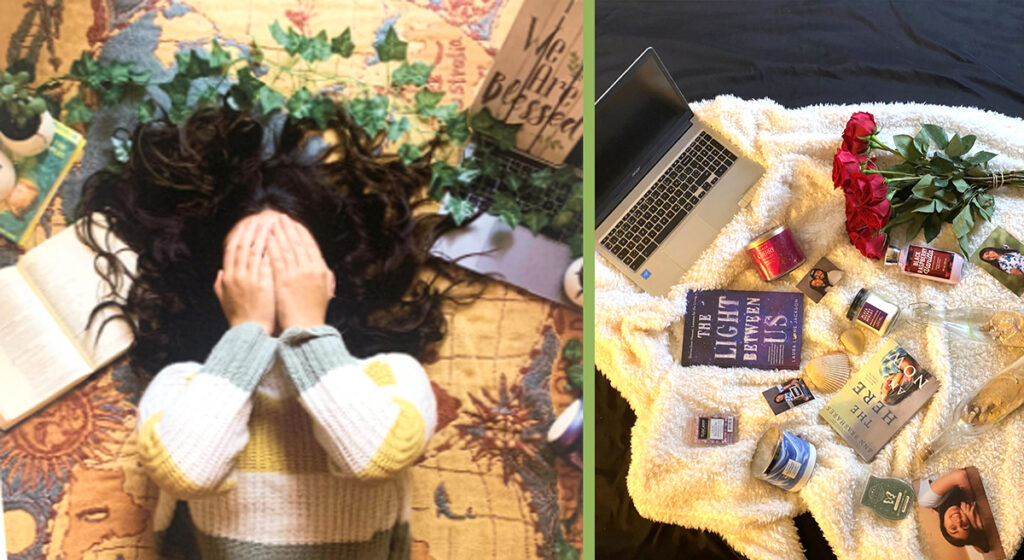
“Perspective can have a huge impact on a photo and draw the viewer in,” shared Julianna Diesel. She engages both her in-person and online students with a unique photography lesson. The idea is to tell a story with a dramatic impact to provide a new perspective on everyday life. Students grab their cameras, tablets, or phones and take pictures following one of these two prompts:
- Bird’s-Eye View
This is not your average selfie! Have the student collect items special to them and their identity and arrange them on the floor, a desk, or a unique surface. Take a photograph from above as an informative self-portrait. The student can also include themselves in the photo without their face visible to create empathy and connection in a different way. Students can create cradles to hold their phones from the ceiling or use the timer on a perfectly propped-up phone. - Worm’s-Eye View
Lie down on the ground and shoot an item such as a leaf, flower, or stone from the viewpoint of a worm. This makes the subjects in view appear strong, powerful, and larger than life.

3. Tiny Art Shows
Space may be limited at home, making it a perfect opportunity to create a tiny art show. Students create a series of artworks no larger than a sticky note that can be displayed just about anywhere with painter’s tape. The whole family can be involved, creating a work of art on a theme provided by the teacher or determined by the student artist. Dollhouses, molding in the dining room, or the outside fence are perfect for a mini-exhibition. If a family wants to take it to the next level, they could fashion a little free library into a neighborhood art gallery for swapping and sharing artistic works. For the family who wants to make a gallery fit for their pet, check out what this couple did for their gerbils.
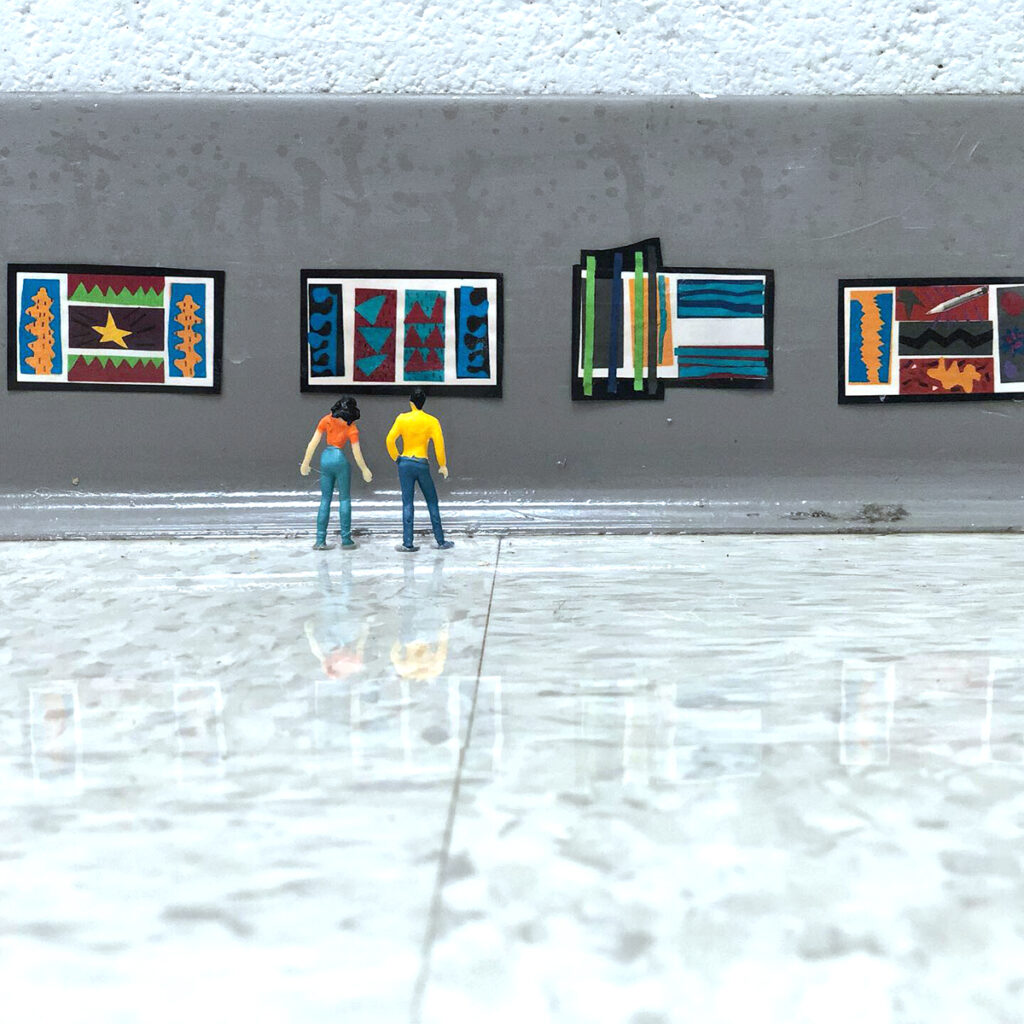
You can create small-scale reproductions of your students’ work at school and display them for students to discover throughout the building. Adding characters intended for model railroads provides scale and intrigue for the display. Or assign students the task of developing their own mini art exhibition within the school. Students secure a location, discuss their plans with a school staff member, and create the exhibition. This is a lot of big learning with tiny physical results. Listen to a conversation with Pilar Billar on the topic of student-driven art exhibitions of average and tiny-sized art on the podcast The Art of SEL.
4. Pop Collage Paintings
Amy Harmon introduces both her in-person and virtual students to the work of Jackson Wrede. Wrede creates pop collage paintings with imagery “collected” on a theme. Students view Wrede’s works and identify what they believe the theme is. Amy asks students to consider themes grounded in their personal interests. For her digital students, Amy assigned the “20 Things Challenge.” Each day, they add five more images to their artwork. On the last day, they add color with whatever art materials they have available at home. The student artists share their works with their classmates. The rest of the group can guess the theme depicted in the images.
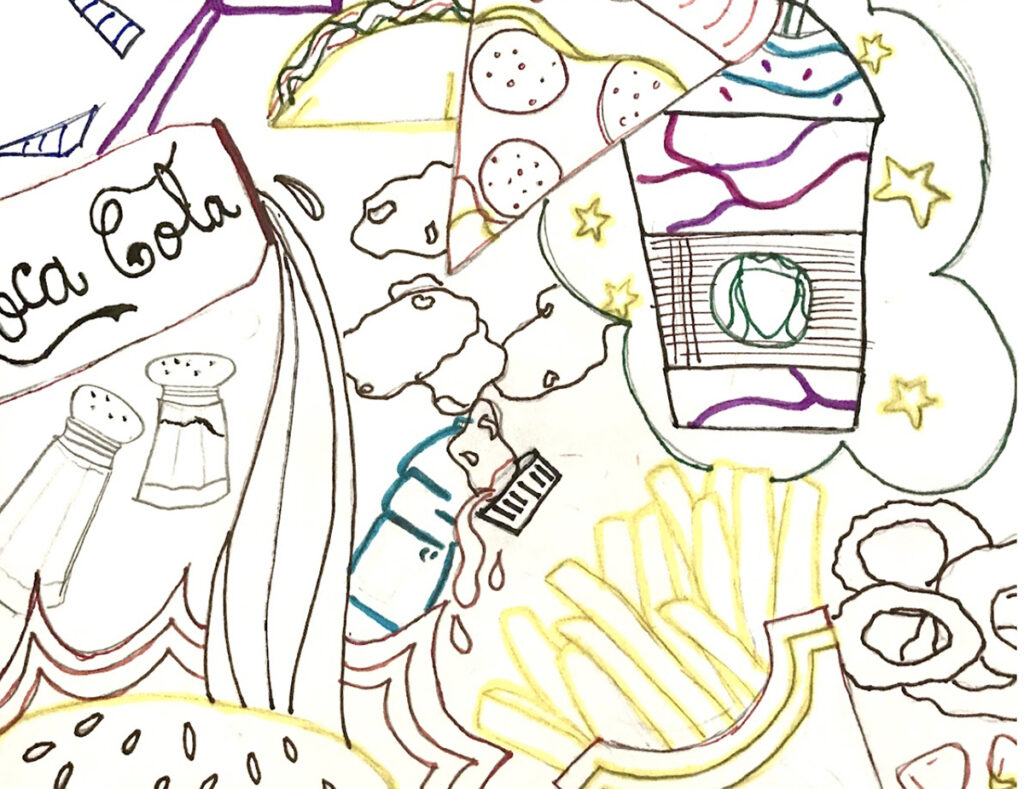
Within the art room, Amy challenges her students to create a composition incorporating 50 images based on a theme. Amy introduces this lesson at the beginning of the year, with students working on this project throughout the year. They pick it up when they are in between projects or are done early with their current assignments.
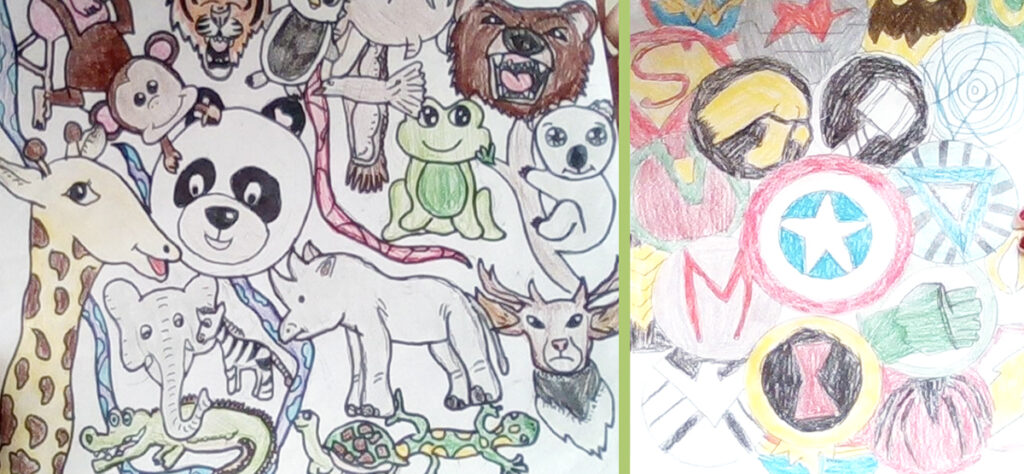
5. Drawing With Mr. J
Drawing With Mr. J is an Emmy award-winning digital drawing series that focuses on social-emotional learning and is hosted by this author. Each episode is under five minutes and begins with a goofy drawing prompt. By the end of the video, students are challenged to consider their awareness of their emotions and the feelings of others. Then, they are challenged to use their drawing to begin conversations with a parent, teacher, or trusted adult. Each episode has a companion guide with discussion questions, extension activities, literacy connections, and home-to-school communication.
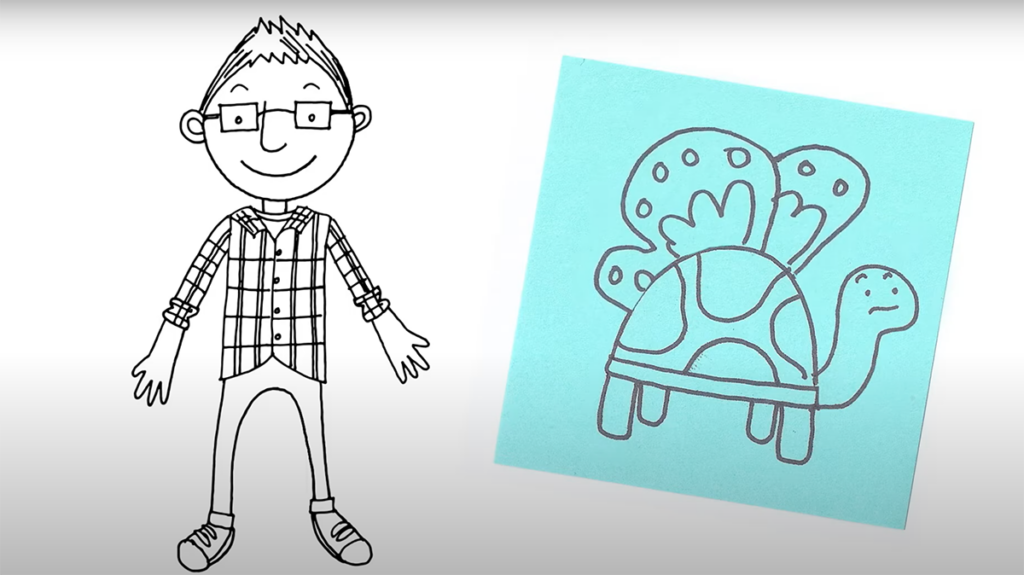
Art teachers can use the videos as drawing challenges at the beginning of their class time. You can also share the videos with your colleagues to use during morning meetings and circle time. For online environments, create a Padlet for students to collect their drawings in one place and view the unique images created by their classmates. The lessons also work well as a substitute activity; the class starts with the video and completing the drawing prompt and ends with adding embellishments and color.
For those students creating at home, this is an opportunity to engage families in the drawing process and critical discussions about feelings. All of the episodes are available at wosu.org/mrj.
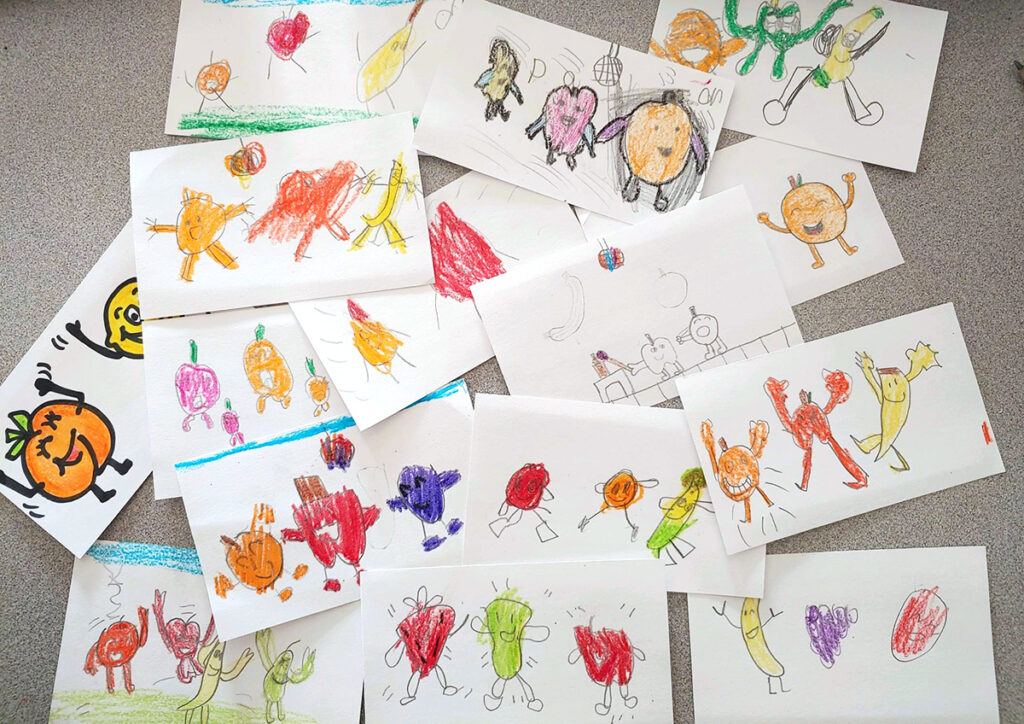
How do we move forward?
We delight when students bring us something created at home, even if it is a hand puppet made from a bag of potato chips. Our work in the art room inspires students to think differently and view the world with creativity. Our collective experience with the pandemic has been challenging. Despite the struggles, we have learned about the needs of our students and how to engage them both at home and school. As we forge into the future, it is necessary to think about our instruction from different vantage points and contexts so we can continue to support our students’ success.
What is one artmaking lesson that you successfully adapted to an online format?
What is one challenge you have faced with students working at home on a traditionally in-person lesson? Identify a solution or modification you can implement moving forward.
How can you encourage students to talk about art outside of the school-based art studio?
Magazine articles and podcasts are opinions of professional education contributors and do not necessarily represent the position of the Art of Education University (AOEU) or its academic offerings. Contributors use terms in the way they are most often talked about in the scope of their educational experiences.
